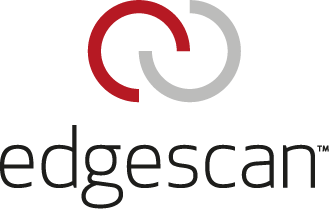Description

Offensity

Tenable One
Comprehensive Overview: Offensity vs Tenable One
Offensity and Tenable One are cybersecurity-focused platforms, each with distinct primary functions, target markets, market positions, and differentiating factors. Here's a comprehensive overview of each:
Offensity
a) Primary Functions and Target Markets:
- Primary Functions: Offensity is a cybersecurity platform primarily focused on vulnerability scanning and management. It automates the process of identifying, analyzing, and prioritizing vulnerabilities within a network. Its key features include continuous scanning, real-time threat detection, and comprehensive reporting.
- Target Markets: Offensity targets small to medium-sized businesses (SMBs) and enterprises seeking efficient vulnerability management solutions. It appeals to organizations looking for cost-effective tools to manage their cybersecurity posture without extensive in-house resources.
b) Market Share and User Base:
- As a relatively newer entrant to the cybersecurity market, Offensity may not have the wide market share or user base that some established competitors possess. However, it has been growing by offering niche solutions tailored to specific needs, especially appealing to companies with limited cybersecurity teams and resources.
c) Key Differentiating Factors:
- Simplicity and Accessibility: Offensity is designed to be user-friendly and easily accessible for organizations that may lack extensive cybersecurity expertise.
- Real-Time Alerts: It focuses on providing real-time alerts and insights into potential vulnerabilities, allowing quicker response times.
- Pricing Model: Often offers competitive pricing tailored for SMBs, making it accessible to a wide range of organizations.
Tenable One
a) Primary Functions and Target Markets:
- Primary Functions: Tenable One is a unified risk-based vulnerability management platform that provides a comprehensive view of an organization's cybersecurity vulnerabilities. The platform integrates risk-based prioritization, asset inventory, and vulnerability assessment across various environments, including on-premises, cloud, and remote endpoints.
- Target Markets: Tenable One targets larger enterprises and organizations that require robust, integrated solutions for vulnerability management, IT asset management, and security analytics. It caters to industries with complex security requirements, such as finance, healthcare, and government.
b) Market Share and User Base:
- Tenable, the parent company of Tenable One, is a well-established leader in the cybersecurity field, known for its Nessus vulnerability assessment product. As such, Tenable One benefits from a broad market presence and a significant user base. Its reputation and integration capabilities contribute to its strong position in the enterprise sector.
c) Key Differentiating Factors:
- Comprehensive Integration: Tenable One offers broad integration capabilities with various IT and security systems, providing a unified approach to vulnerability management.
- Risk-Based Insights: The platform emphasizes risk-based insights, allowing organizations to prioritize vulnerabilities based on their potential impact.
- Extensive Reporting and Analytics: Provides detailed reporting and analytics features, supporting strategic decision-making and compliance requirements.
- Scalability: Designed to scale with the needs of large organizations, supporting extensive asset inventories and complex network environments.
Comparison
- Market Reach: Tenable One, backed by the established Tenable brand, enjoys a broader market reach and customer base compared to Offensity.
- Target Audience: Offensity is more focused on SMBs and those new to vulnerability management, while Tenable One is geared towards larger, more complex organizations.
- Feature Depth: Tenable One offers a more comprehensive suite of features, catering to enterprise needs for integration, scalability, and advanced analytics.
Ultimately, the choice between Offensity and Tenable One will depend on the organization's size, complexity, budget, and specific cybersecurity needs.
Contact Info

Year founded :
Not Available
Not Available
Not Available
Not Available
Not Available

Year founded :
Not Available
Not Available
Not Available
Not Available
Not Available
Feature Similarity Breakdown: Offensity, Tenable One
When comparing Offensity and Tenable One, we are essentially looking at two security platforms with a focus on vulnerability management and proactive threat detection. Let's break down their similarities and differences:
a) Core Features in Common:
-
Vulnerability Scanning: Both Offensity and Tenable One provide robust systems to scan for vulnerabilities across various networked devices, applications, and cloud environments.
-
Threat Intelligence: Both platforms integrate threat intelligence to help prioritize vulnerabilities based on the potential threat they pose.
-
Reporting & Analytics: Comprehensive reporting and analytics features are present in both solutions, allowing users to generate detailed vulnerability reports and track remediation processes.
-
Continuous Monitoring: Both platforms offer continuous monitoring capabilities to identify vulnerabilities in real-time and alert users to new threats.
-
Integrations: Both Offensity and Tenable One support integrations with other IT and security tools, facilitating a more streamlined workflow for security teams.
b) User Interface Comparison:
-
Offensity: Known for its user-friendly interface, Offensity provides an intuitive dashboard that prioritizes simplicity, making it easy for users to navigate through various features. The platform focuses on clear visuals and straightforward reporting to ensure users can quickly understand their security posture.
-
Tenable One: Tenable One also offers a visually appealing interface but is often noted for its depth and richness in data presentation. It caters to more advanced users who may need detailed insights and comprehensive dashboards, providing numerous customizable views and more granular control over data visualization.
c) Unique Features:
-
Offensity:
- Simplicity & Quick Deployment: Offensity is often praised for its rapid deployment capabilities and ease of use, which can be particularly appealing for organizations without dedicated IT security teams.
- External Attack Surface Management: Offensity places a significant emphasis on monitoring external attack surfaces, offering a distinctive edge in identifying potential entry points for attackers.
-
Tenable One:
- Comprehensive Asset Visibility: Tenable One provides a more holistic view of IT assets, including those in hybrid and cloud environments, offering deeper insights into asset inventory.
- Risk-Based Vulnerability Management: Tenable One is known for its focus on risk-based vulnerability management (RBVM), where it prioritizes vulnerabilities based on the actual risk they pose, factoring in the threat landscape and business context.
- Predictive Prioritization: This feature sets Tenable apart by using data science to predict which vulnerabilities are most likely to be exploited in the near future, helping organizations better prioritize patching efforts.
In summary, while both Offensity and Tenable One offer robust vulnerability management features, the choice between the two often comes down to specific organizational needs, user interface preferences, and the unique strengths each platform brings to the table.
Features

Not Available

Not Available
Best Fit Use Cases: Offensity, Tenable One
Offensity
a) Best Fit for Businesses or Projects:
Offensity is a cybersecurity platform focused on vulnerability management and penetration testing, often delivered as a service. It is designed for businesses that need an external view of their IT security posture.
- Small to Medium Enterprises (SMEs): Offensity is well-suited for SMEs that may not have extensive internal security teams but require robust vulnerability assessments and regular penetration testing to secure their assets.
- Startups: Tech startups that are scaling operations and need to ensure their innovation is secure from external threats can benefit from Offensity's automated and expert-driven assessments.
- Digital Agencies or MSPs: Agencies managing various digital projects and infrastructures can leverage Offensity's services to provide security assessments as an added value to their clients.
- Projects Needing Compliance: Businesses that need to meet specific compliance requirements like GDPR, ISO 27001, or others can use Offensity to identify and manage vulnerabilities proactively.
d) Industry Verticals or Company Sizes:
Offensity caters predominantly to smaller organizations and industries such as technology startups, e-commerce, and digital media that need agile and comprehensive security solutions without the complexity of larger enterprise-focused products. Its services are practical for companies looking to integrate regular security assessments into their overall security strategy without substantial in-house resources.
Tenable One
b) Preferred Scenarios:
Tenable One is an exposure management platform that provides a broader suite of tools for vulnerability management, including risk-based vulnerability prioritization.
- Large Enterprises: It is ideal for larger enterprises needing to manage complex IT environments, including extensive cloud infrastructures and numerous endpoints.
- Financial Institutions: Given the high stakes, financial institutions require a high level of confidence in vulnerability management, continuous monitoring, and compliance, which Tenable One provides.
- Healthcare Providers: The healthcare industry, with its regulatory requirements and sensitive data, benefits from Tenable’s comprehensive approach to managing vulnerabilities and ensuring compliance.
- High-Security Industries: Industries such as defense, aerospace, and government agencies where security is paramount can effectively use Tenable One for its risk-based prioritization and extensive vulnerability coverage.
d) Industry Verticals or Company Sizes:
Tenable One is targeted at larger enterprises across various industry verticals, including finance, healthcare, energy, and government. Its scalability and extensive feature set cater to organizations with complex IT infrastructures and stringent regulatory obligations. The platform is designed to handle large volumes of data and provide actionable insights for wide-ranging vulnerability management, making it suitable for big enterprises with dedicated security teams.
Overall, while Offensity serves smaller businesses or specific projects with a need for external vulnerability insights, Tenable One is designed for larger, security-conscious organizations that require deep integration into their overall risk management frameworks.
Pricing

Pricing Not Available

Pricing Not Available
Metrics History
Metrics History
Comparing undefined across companies
Conclusion & Final Verdict: Offensity vs Tenable One
When comparing Offensity and Tenable One, both products offer substantial benefits for organizations seeking robust cybersecurity solutions. However, their effectiveness and value can depend on the specific needs and context of the organization considering them.
a) Overall Value
Tenable One generally offers the best overall value for organizations seeking comprehensive and scalable solutions. It provides a wide range of features including vulnerability management, continuous monitoring, and the ability to integrate with other security tools, making it a versatile choice for larger organizations with complex security needs.
b) Pros and Cons
Offensity
Pros:
- User-Friendly Interface: Known for its intuitive and clean user interface which simplifies vulnerability management.
- Automated Scanning: Offers continuous automated scanning that helps in identifying potential security threats in real-time.
- Cost-Effectiveness: Typically priced competitively, making it a good option for small to medium-sized businesses.
Cons:
- Limited Integrations: Fewer third-party integrations compared to Tenable One, which can be a limitation for organizations with diverse security needs.
- Scalability: Might not be as scalable for very large enterprises with extensive and complex IT environments.
Tenable One
Pros:
- Comprehensive Coverage: Provides extensive vulnerability management and risk assessment tools.
- Highly Integrative: Easily integrates with various third-party applications and security systems, offering a seamless experience for complex environments.
- Industry Reputation: Well-established reputation in the cybersecurity sector, often seen as a reliable choice for large enterprises.
Cons:
- Complexity and Learning Curve: Can be complex to set up and manage, often requiring dedicated resources.
- Cost: Generally more expensive, which may not be suitable for organizations with limited budgets.
c) Recommendations
-
For Small to Medium Businesses: If budget constraints and ease of use are top priorities, Offensity may be a better fit given its cost-effectiveness and simpler deployment.
-
For Large Enterprises: Tenable One is recommended due to its comprehensive capabilities and extensive integration options, which are crucial for large and complex IT infrastructures.
-
Assess Specific Needs: Organizations should evaluate the specific vulnerabilities they face and prioritize features accordingly. If continuous monitoring and comprehensive threat detection are vital, Tenable One might offer better long-term benefits. However, for straightforward vulnerability assessment without the need for extensive integration, Offensity can be a more pragmatic choice.
Ultimately, the decision between Offensity and Tenable One should be based on budgetary considerations, the scale of deployment, and the specific security needs of the organization. Conducting a detailed needs assessment and potentially trialing both solutions could provide additional insights tailored to the organization’s unique requirements.
Add to compare
Add similar companies


